How do you play medium high zonal 2-2-1 press? How do you break low block 1-2-2, aka “Erä’s cottage”? How do you start the build up from your defensive zone with a back triangle?
People contact me often and ask different kind of questions about floorball and I’m very pleased about it. There is lots of young and also older coaches from Finland (and abroad) who are motivated to learn and who are open to new ideas. I try to always answer carefully and with respect because if you are willing to ask sincere questions from an unknown guy, you deserve a proper answer. Sometimes the questions are about broader topics, sometimes about specific situations for example how does zonal 2-2-1 work.
However. It is somewhat difficult to answer those kind of specific questions because I don’t know how to answer. You know, it depends.
It depends.
There is no “right way” to play for example 2-2-1 press or “right way” to build up the game from back triangle. It depends what you want to achieve with that. It depends what is your players background. It depends how your players have played those situations before. From what level do you want to press the opponent and how intensively? Do you stay on your own zones or do you follow your man? If so, how far? Where do you want to win the ball and after that, what would you like to do? Where do you want to play the ball in the build up phase? To which player? Would you like to play the ball to a player who’s body is facing our own goal or to a player who’s body is facing the opponents goal?
And so on. Also, it is not very good idea to separate these moments from the whole. In a game you try to constantly balance with the attacking and defending moments, with control and organisation and you try to to live with unorganised moments. It is easy to block the opponents attacking game in the imaginary world of tactics board but the game is a complex system where many different interconnected things make the player’s and line’s decision making and communication harder.
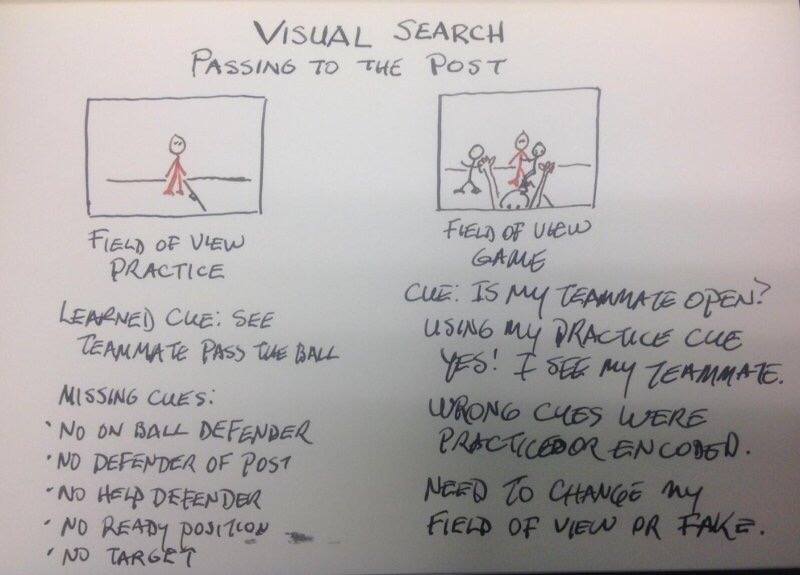
Picture 1: Cues for the player in closed drill vs. A game situation
A common challenge is how to make the preferred actions in the field transfer from the coaches head to the actual, complex game situation. Almost every coach has said to his players – and I bet all the players have heard it – that “We just talked about this situation” after the situation in the field has ended with unwanted results. The thing is however that the drawings on the tactics board – not to mention drawings on the sand – are not enough. If you want to be able to make high quality decisions in a game from moment to moment, you need repetitions without repetition in your training sessions. As the opponent is more unpredictable than the magnets on your tactics board, you need practice in these unpredictable moments. When you are trying to learn your game model, “know-what” is not enough. You need “know-how”.
(Know-how is a term for practical knowledge on how to accomplish something, as opposed to “know-what” (facts). Source: Wikipedia)
A Minimal case study; Classic’s challenges in their defensive zone build up against Falun
The Finnish champions Classic has a strongly player-led game model. Classic faced Swedish powerhouse Falun in the Champions Cup final game in Seinäjoki and although Classic's roster has perhaps weakened a bit as Nico Salo and Riku Reunamäki have left the club, the team still has a very strong core. Five players played in Finnish World Games team (Savonen, Lamminen, Johansson, Piha and Salin). Joonas Pylsy played in the gold-winning Team Finland in World Championships, Mikko Leikkanen has been a national team regular whenever healthy, Joona Rantala is one of the most promising Finnish youngsters and Lassi Toriseva has shown to be able to win the big games in the playoffs. And of course there’s also Lassi Vänttinen who still knows how to put the ball to the net. In other words, although Falun’s roster is perhaps a little bit sharper, Classic has a high quality team too.
Falun organised their defense in a very traditional Swedish way as they mostly played their defensive zone defence with zonal 2-1-2 and the attacking zone defence with zonal W/2-1-2. The formation has a very long tradition in Sweden and it is certain that during many seasons it has been drilled to every Falun player’s backbone. This makes defending as a cohesive unit easier and it also helps finding the proper defending “fighting spirit”. This combined with the quality of Falun’s roster would have made it tough for Classic to break the Swedish champions defense even if Classic’s attacking organisation would have been top of the notch. But, with better and more systematic attacking structures Classic would have been able to create more pressure on Falun’s defensive organisation and its weaknesses. More pressure to the defense would have perhaps created more unorganised moments for the swedes which Classic's quality individuals could have exploited. However, as Classic’s attacking organisation is strongly player-led, they were not able to systematically find Falun’s weak spots and Falun was able to keep their defense organised pretty easily.
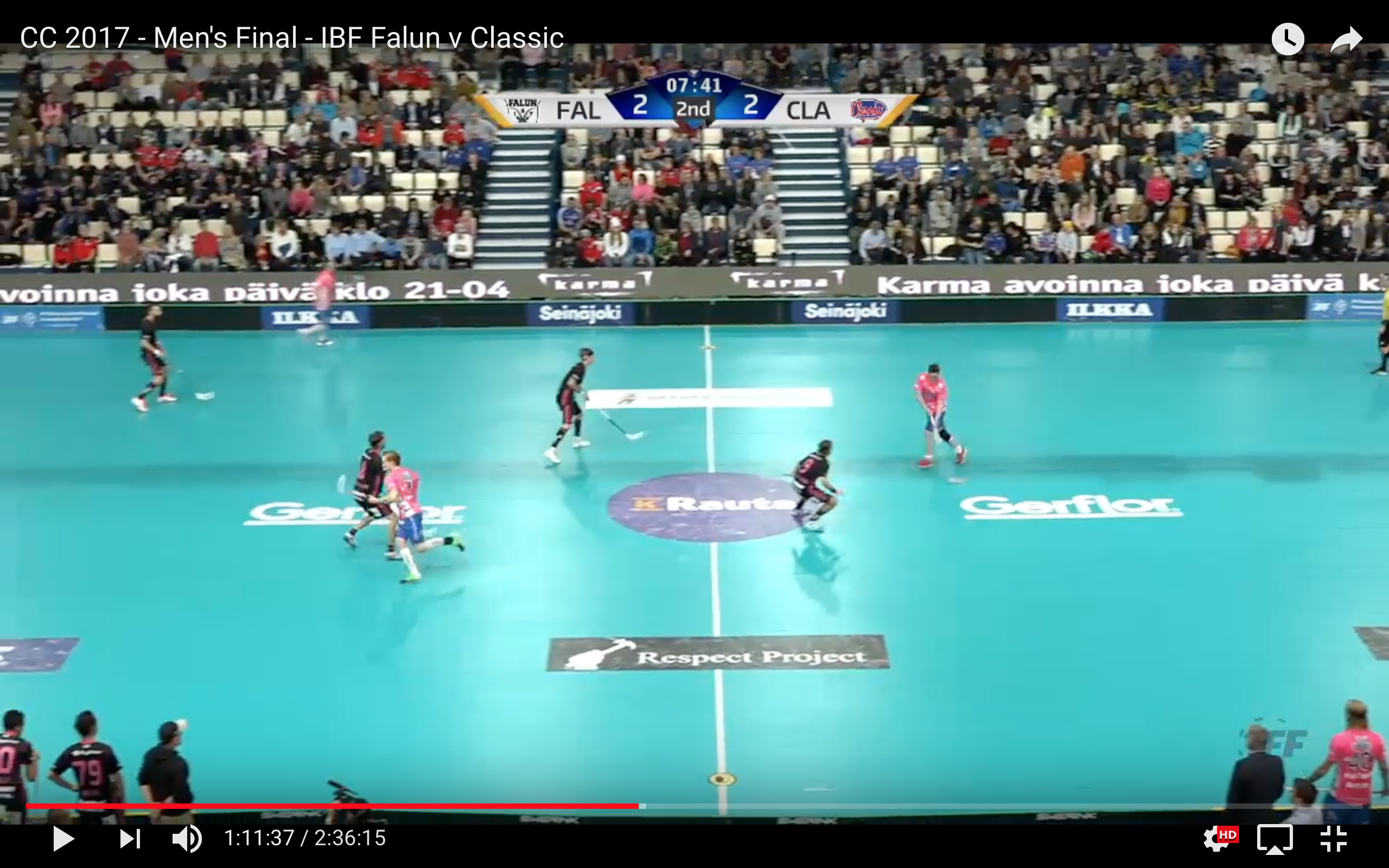
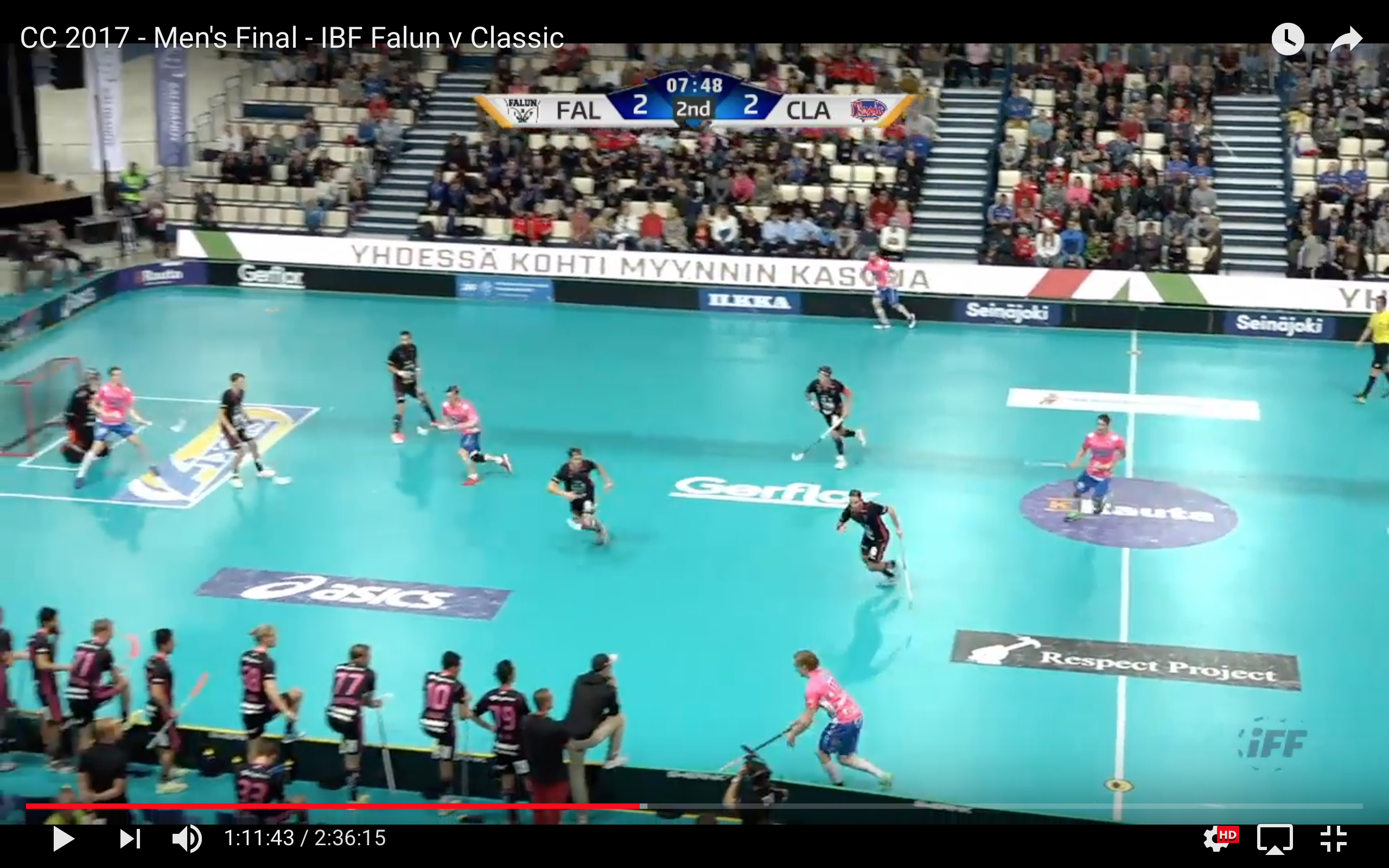
Pictures 2 and 3: Falun’s W-pressing vs. Classic’s defensive zone attack. In traditional W-pressing the defending team tries to steer the opponent to the left side. There the left defender puts strong pressure to attacking team and tries to force turnovers and create chances for counter-attacks.
Defending team’s right winger normally tries to prevent the attacking team’s players from playing the ball to the right side (from defending team’s perspective). If the attacking team is able to play the ball with quality behind the right winger and simultaneously bring one player to the center, it creates a momentary 1vs.2 situation for the defending team’s center. This creates pressure for the defending team’s organisation.
Classic didn’t try to create this (or any other) situation systematically or it didn’t have clear methods in trying to do so. In the lower picture Classic plays the ball to the left (from their perspective) by circulating the ball from the right, to bottom to left side. The speed of play of this sequence compared to the defending speed of Falun is not enough to create unorganised moment for Falun.
The most simple solution in creating challenges for the W-press is to move the defending team’s right winger towards the center. At the same time one player moves to the back as back support and one player moves to the left side. Sometimes excellent players are able to play the ball directly from this sideways dribble to the player on the left but the safest option is to drop the ball to the back support who plays the ball immediately either to the left side to created space or to the center creating a 2v1 overload against defending team’s center.
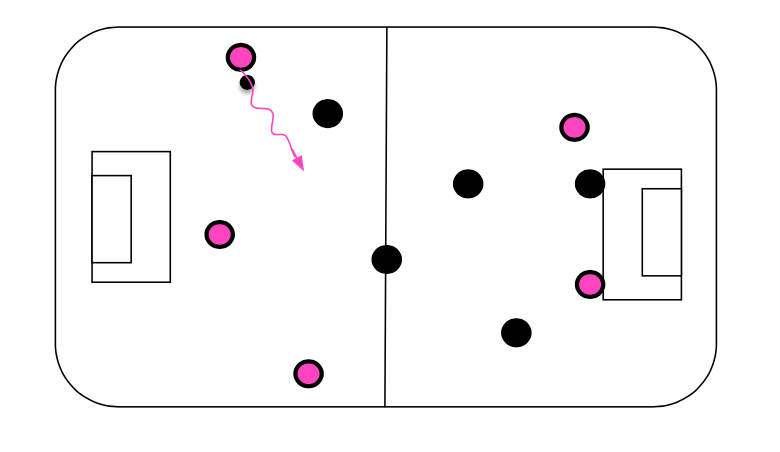
 Pictures 4 and 5: The ball is played with a systematic structure to the weak spot of Falun’s W-press.
Pictures 4 and 5: The ball is played with a systematic structure to the weak spot of Falun’s W-press.
Because Classic faced the best club team in the world, it is very possible that this kind of simple structure wouldn’t have been sufficient to put enough pressure on Falun’s defensive organisation. But because Classic have high quality players in their roster, more complex structures would be within their reach with a proper training.
Video 1: Sweden’s national team played very versatile defensive zone attacking game from time to time during the preparation to the last World Championships.
The challenge for Classic is maybe a bit paradoxically the fact that at the moment, they don’t have real challengers in Salibandyliiga. Passo Peltola has built such a strong group of players that although the game model is player-led, the quality of the players is so high that they are able to create problems to their Finnish opponents without systematic attacking team play. The main goal for the attacking game is to unorganise the opponent and score. Players like Eemeli Salin are able to unorganise the lesser opponents even individually. Against team as good as Falun it was not enough.
Creating a Game Model based on principles
If the players are responsible for organising the attacking game, there will be problems especially when the methods are not working in a game situation. The player lives and feels the game from within himself and is not able to organise himself and four other teammates to a cohesive unit on the fly. Moreover, there will be big challenges if the line is constantly changing or one familiar piece is missing. When this happens, a world class goal-scorer like Sami Johansson seems to be a mere mortal and Jussi Piha doesn’t seem to be a genius after all.
There’s also a problem with drawing lines and “set plays” on the tactics board if the game asks the players to do different kind of decisions. At worst, the team may end up playing far from its potential like what happened to the Swedish U19’s team in the World Championships Final game against Finland. A very skilled group of players were more or less prevented from playing the game at hand as their methods were diminished to just few set plays (more about the U19’s Final from here and here).
A more “antifragile” and adaptable way to create a game model is to create it based on main principles, to sub principles of those main principles and sub sub principles of those sub principles. The team’s training process is then build around these principles starting from the first practice session.
A simplified example:
Moment:
- Breaking a W-press
Main principle:
- play the ball to the left side of the field (from our perspective) and create a 2v1 -situation against opponents center
Sub principles:
- create a passing lane by moving the opponent’s right winger towards the center
- Position yourself in the midfield so that we have simultaneously an open player in the center and on the left side
- Create an easy passing option to the back by bringing one player as back support
Sub sub principles:
- the body position of the back support must be so that he can play a one touch -pass to the left side but is able to keep other options open too
- The player who moves to the left side has to be in side body position
- The player in the center positions himself just behind the opponents first line of defence and in side body position
And so on. Creating a training process around above-mentioned principles is a very challenging task because it requires the coach to have a very strong idea what he wants to see in a game in numerous different situations. The knowledge in the coaches head is not enough though. After that the coach must create the training process around those principles in a logical manner so that the players are able to learn the game model effectively. Because there are almost infinite number of situations in a game, creating an “antifragile” and adaptable game model is a long process. However, if the team’s training process is logical and smart, the rewards can be great. A team that seamlessly adapts to different kind of situations in a game. A team that has a shared “game language”. Will it bring success and medals for certain? No, because the game is A GAME. However, the probability of success becomes higher when the team is able to adapt to different kind of situations against different kind of opponents and be the best it can be when it really matters.
And once more. How do you build up a game from back triangle in your defensive zon? It depends.
EDIT. Disclaimer. When I write about pressing in a 2-2-1 formation I mean that the team has two players at the top level and at the second level and one at the bottom. For example in Switzerland it would be called 1-2-2, starting from bottom to top.
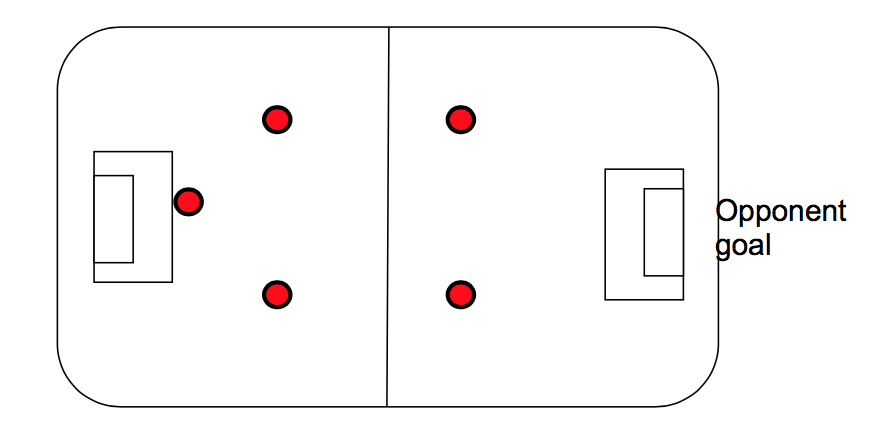
Picture: 2-2-1 pressing formation. In Switzerland this would be 1-2-2 pressing formation.
